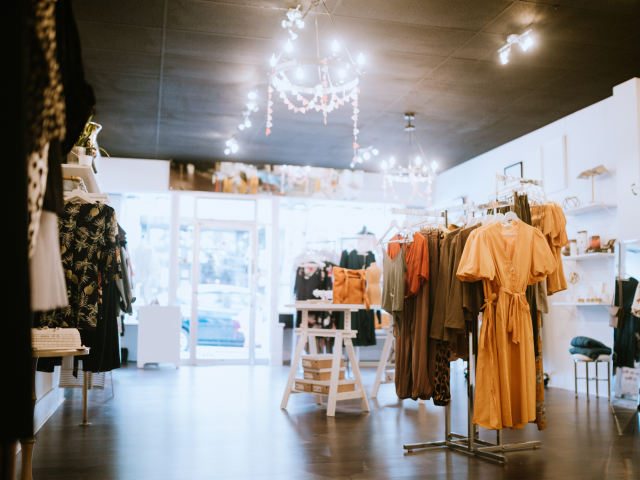How the shift from trendy to timeless has reshaped customer expectations
In the whirlwind of trends, flip-flopping fashions, and the pervasive influence of social media, one thing has become increasingly clear: Personality is staging a glamorous comeback in the retail world as more and more consumers are choosing timelessness over trends.
The rise of fast fashion
The ’90s was a revolutionary era for the retail industry. The ‘in and out’ concept of fashion wasn’t new, but its speed was about to be turbocharged.
Fast fashion was a term that began to resonate, a business model defined by its ability to turn around runway looks into affordable clothing for the masses, at an unprecedented pace. By the mid-90s, online shopping took off accelerating what was already a dizzying rate of textile consumption.
30 years later brands like Shein have taken up the torch, providing a seemingly endless supply of new clothes, galvanized by the high stakes and even higher demands of the internet age.
Social media and fast fashion
Fast forward to the present, and the impact of social media on fashion is irrefutable. Instagram and TikTok are the new front rows, dictating trends at a rate that the industry could scarcely have imagined.
Designers and brands no longer have the luxury of waiting months to churn out new lines. Where brands used to debut two runway collections per year, we are now witnessing the showcase of 52 collections in a year— meaning a new collection every week. The rapid turnover of social content demands a continuous stream of ‘new’ from them, to keep their audience engaged (and hovering over the ‘buy now’ button).
Yet, under the gloss of social media is the ephemeral nature of these trends. What was in vogue yesterday is quite possibly collecting virtual dust today, which has brought consumers to a crossroad. They’re now looking for more than what’s popular; they yearn for what’s personal.
The return of personal style
The recent rise in social platforms like TikTok and Instagram have also contributed to a growing movement of anti-fast fashion and finding pieces that align to an individual’s personal style, rather than what’s “trending” at the moment (because let’s be honest trends really only last for what seems like a moment now).
Most younger consumers (Millennials and Gen Z) have only lived in an era of fast fashion, trends, and influencers so knowing what styles are personal to them can be a challenge, but it’s one that more and more are taking on with the growing shift from seeing clothes as disposable products of seasonal whims, to an extension of self.
Trends still have their place in fashion, just taking a backseat to the “essentials”, rather than taking the spotlight. Personalization is on the rise with trends like color analysis, capsule wardrobes, “quiet luxury,” and body type styling gaining popularity online. Consumers aim to curate a timeless wardrobe of pieces that reflect their unique style, offering versatility for mixing and matching over the years.
And retailers are already starting to feel this shift from trendy to timeless. In a survey of 18-35 year-olds across the UK 58% of shoppers saying they won’t be following trends this year, and 77% stating they care more about how long their clothes will last than how ‘on trend’ they are.
What does this mean for retailers?
For retailers navigating the shift to personality over popularity, the message is clear— personalization needs to get more personal. While knowing your clients birthday will still definitely be appreciated, brands need to get deeper.
Associates need to act like and be seen as personal stylists who have expert knowledge on everything fashion. They need to understand not just what shoppers are buying, but why.
Recommending items isn’t enough; understanding the customer’s wardrobe, their personal color palettes, and the stories they want their clothes to tell is the new benchmark for service.
Receiving a text that says “You bought a cashmere sweater last fall and now we have a new line, check it out” is great because maybe the customer does want just another cashmere sweater. But, saying “We just got a new line of cashmere sweaters in, and these 3 colors are in your deep autumn color palette” is definitely more personal and more compelling.
Gone are the days of scattergun outreach; in its place, tailored messaging that speaks directly to the shopper’s aspirations. The key to unlocking the next frontier in retail isn’t in defining what’s ‘in’ but stating confidently what’s ‘you’.
Bringing it all together
The new era of fashion retail focuses on timeless personal style rather than fleeting trends. Brands and retailers can lead this change by understanding and meeting each customer’s style. The future of retail involves building lasting relationships through tailored experiences, elevating the retail landscape.
Learn more
Want to learn more about the Clienteling solution that’s loved by the world’s most iconic retailers like David Yurman, Versace, Jimmy Choo, Mulberry, Saks Fifth Avenue, Ferragamo, COACH, and Michael Kors?
Contact us today for a demo!
Recommended reads
If you liked this blog, check out these other titles:
- Blog: What is clienteling?
- Webinar: The art of loving your customer: How to build customer relationships that last
- Webinar: Powering world-class customer experiences— an inside look at Coach and Jenni Kayne

